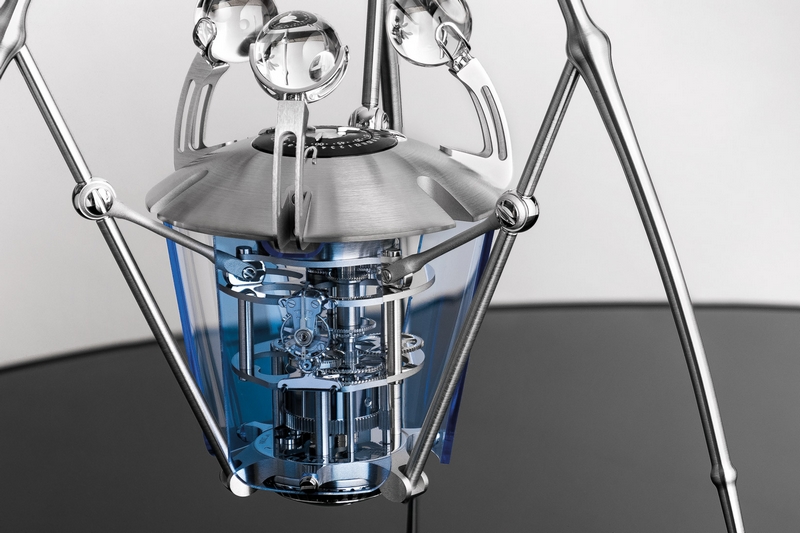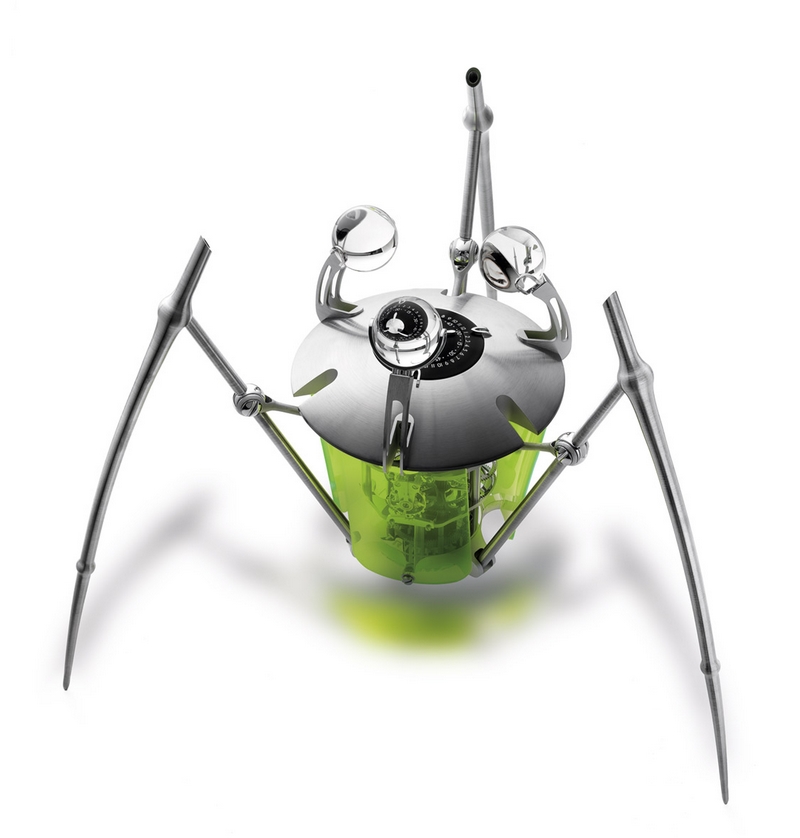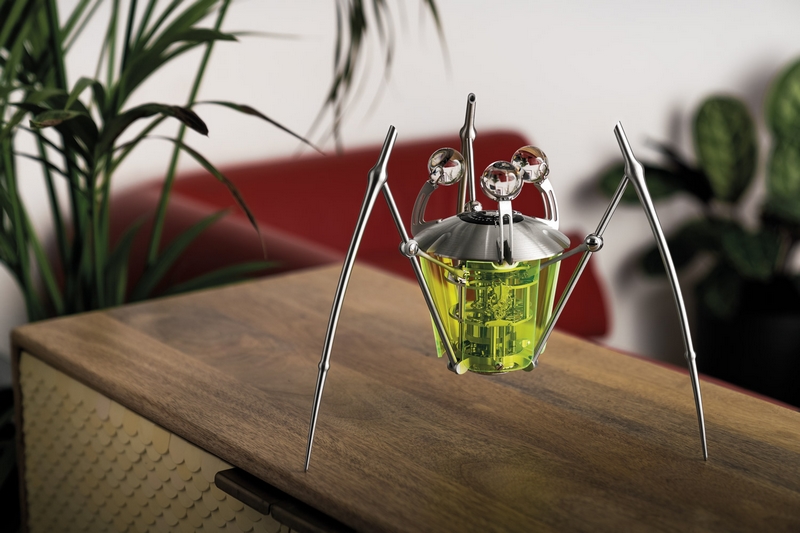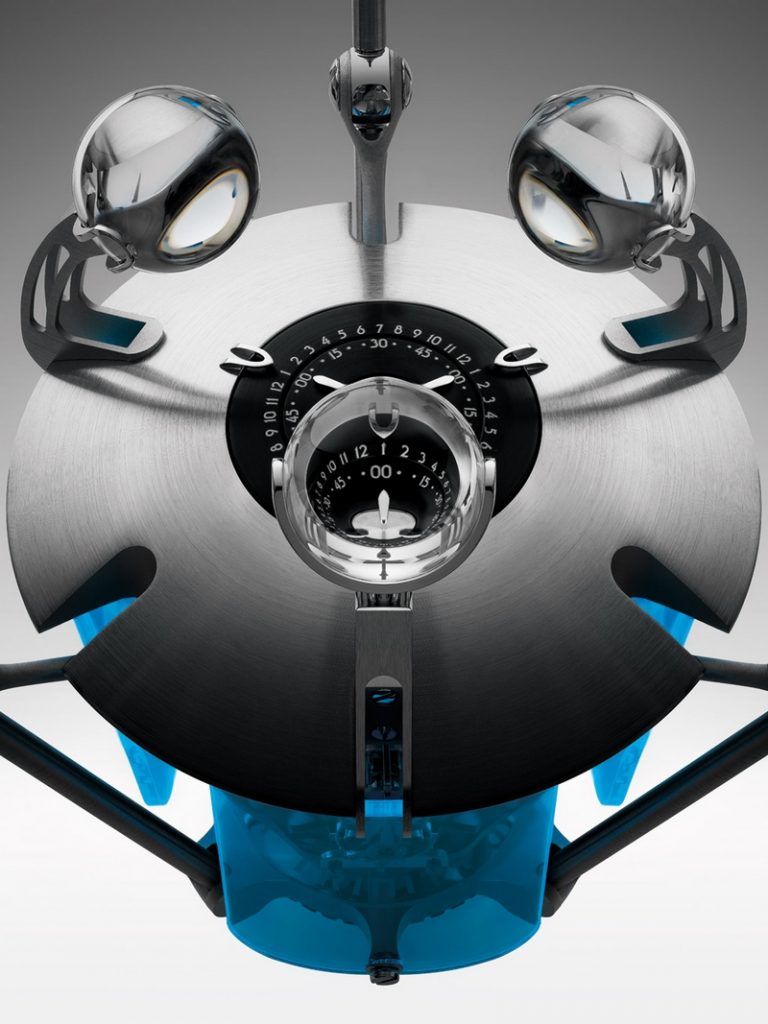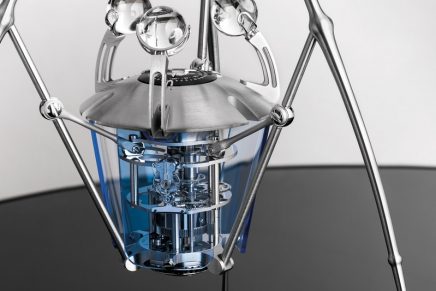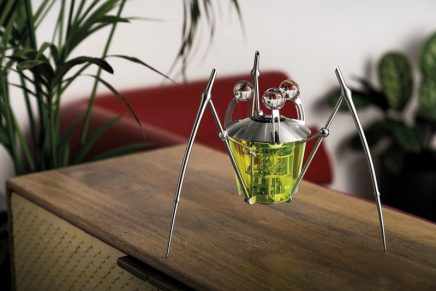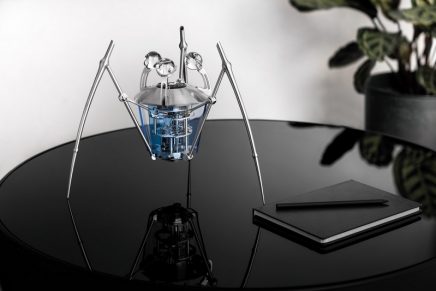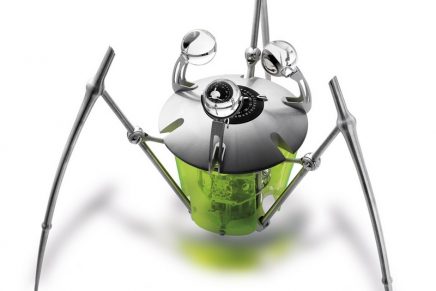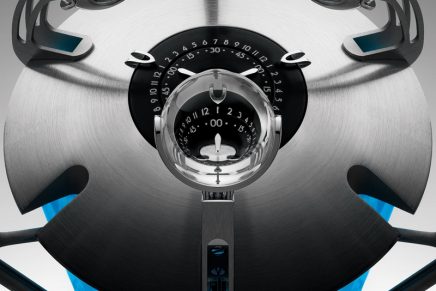Robocreatures could well be future time capsules, fossilised “life” from a prehistoric era. With TriPod, Berlin-based designer Maximilian Maertens, L’Épée CEO Arnaud Nicolas, and Büsser lead us into a horological post-modern prehistoric era.
MB&F + L’Epée 1839 present TriPod – the 13th collaboration between MB&F and Switzerland’s premier clockmaker L’Epée 1839.
MB&F Tripod comprises a minimalist clock face suspended between three delicate insect-like legs. It follows the mighty T-Rex in what will become a trilogy of half-animal/half-robot creations that MB&F calls Robocreatures. Tripod’s name originates in the trios that inform it: three legs, three insect-eye spheres, and three-movement levels comprising the creature’s mechanical body. Also, Tripod is the second in a group of three clocks set to form a trio.
TriPod launches in three limited editions of 50 pieces each in neon blue, neon green, and neon red.
TriPod features three delicate legs supporting a colourful body, three insect-eye spheres made of precision lens-quality glass, and a clock dial making one full revolution in 36 hours that indicates three sets of hours and minutes. Underneath the dial is a 182-component three-dimensional sculptural movement crafted on three levels by L’Épée1839 with a vertical balance slowly beating at a traditional 2.5Hz (18,000vph). Time-setting and winding are by key,and when fully wound the movement offers a generous eight-day power reserve. The 26-cm tall TriPod is made of plated brass and weighs approximately 2.8kg, its mass perfectly distributed over its delicately sculpted legs.
An essential element of TriPod clock is indicating the time, which is done by looking down on the dial composed of rotating disks. But this clock requires some interaction between Man and Machine: the observer reads the time thanks to three optical spheres, each magnifying the clock’s numerals and making them legible.
To allow all three of the “insect eyes” to show the time from any angle, the dial features three sets of numerals 1-12, meaning that the dial completes a full rotation in 36 hours instead of the customary 12 hours. The time is visible through one of the magnifying lenses at any time.
The entire premise of all of MB&F’s mechanical masterpieces is to foster children’s dreams as a creative adult. While the primary inspiration for TriPod is the mosquito caught in amber that provides the DNA to genetically craft new dinosaurs, for the clock’s look Maertens decided to emulate a water strider (Gerridae), an insect able to walk on the surface of water using surface tension and its long, slender, hydrophobic legs to distribute its weight over alarge surface area.
TriPod is powered by a movement completely designed and produced in-house by L’Epée 1839 and finished to the highest standards of traditional Swiss clockmaking.
A table clock, TriPod features essentially the same mechanisms as a wristwatch only larger: gear train, mainspring barrel, balance wheel, escape wheel, and pallet lever. L’Epée 1839’s regulator also features an Incabloc shock protection system, something generally only seen in wristwatches, which minimises the risk of damage when the clock is being transported.
One might be tempted to think that the more substantial size of the components simplifies work. However because of the bigger surface areas, finely finishing the movement is much more time-consuming than finishing a wristwatch.


